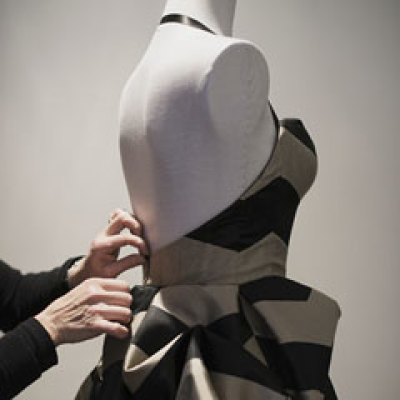Corsetier
The corset maker designs, creates, and restores custom-made corsets, combining craftsmanship, technical expertise, and a sense of the body. Working with fine materials such as cotton, silk, satin, and leather, they create structural undergarments designed to sculpt the figure, while respecting the requirements of comfort, functionality, and aesthetics.
The corset is composed of a structured "body"—often boned—and adjusted by a lacing system. Its creation requires precision in cutting, mastery of complex assemblies, the application of reinforcements, finishing work, and sometimes embroidery or ornamentation. The corset maker takes into account the person's morphology, as well as their postural, aesthetic, or medical needs (orthopedic or support corsets).
A craft of tradition and innovation, it is part of the worlds of fashion, costume, haute couture, entertainment, and historical reenactment. The art of corsetry combines technique, delicacy, and creativity.
Become a corset maker
There is no specific certified professional training for the corsetry profession in Switzerland. However, it is still possible to transfer knowledge without certification from a craftswoman.
In an initial CFC training course for clothing designers , offered in particular by the Fribourg Couture School, courses in the design and manufacture of custom-made clothing, including modules on cutting, assembly and finishing of complex pieces. Duration 3 years. You will find all the information on orientation.ch .
A federal diploma for clothing designers, accessible after the CFC, deepens skills in design, patternmaking, and workshop management, offering a specialization in the production of personalized clothing. Duration 1.5 years. You will find all the information on orientation.ch .
Institutions such as the Schweizerische Bekleidungsfachschule (BKFS) offer courses in fashion design, pattern making, sewing, and business management, useful for those wishing to specialize further.
In France, several training courses allow you to specialize in corsetry:
- Offered by FORMAMOD in Paris, this two-year (800 hours) continuing education course covers styling applied to lingerie, model design, pattern making and mannequin assembly.
- Organized by Les Ateliers Alix in Paris, this 30-hour course offers an introduction to the corset, covering its history, boning and assembly techniques, as well as its contemporary adaptation.
Craft makers index

- Gimmi Sylvie, Bustier & Co
- Stylist specializing in bustiers
- Lausanne
- Vaud
- See